MANUFACTURER'S SPECIFICATIONS:
(FM Tuner Section) IHF Usable Sensitivity: 1.7 µV. S/N: 62 dB.
Capture Ratio: 2 dB. THD Mono: 0.7%.
Stereo FM Separation: 42 dB @ 1 kHz. (AM Tuner Section) IHF Usable Sensitivity: 18 µV. (Amplifier Section) IHF Power: 100 watts total @ 8 ohms. RMS Power: 35 watts/channel (each channel driven); 28 watts/channel (both channels driven). THD: Under 0.5% at rated power. Frequency Response: 10 to 100,000 Hz ±3 dB. Power Bandwidth: 15 Hz to 40 kHz. S/N: Mag. Phono 80 dB; Aux 100 dB. Tone Control Range: Bass +11 dB, -16.5 db @ 50 Hz; Treble +10 dB,-9.5 db @ 10 kHz. (General) Dimensions: 18 1/16" W x 14 1/2" D x 5 11/16" H.
Price: $299.95.
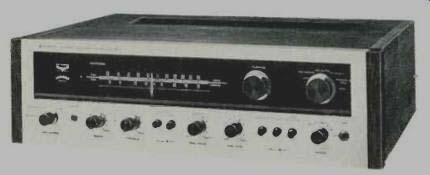
Fig.1
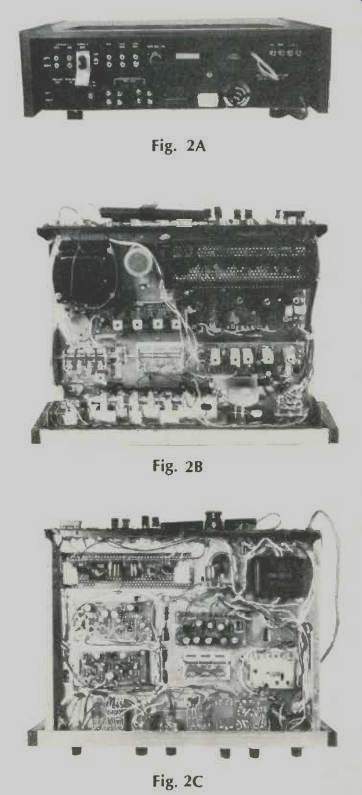
Figs. 2A, 28, 2C-Rear, and exposed top and bottom of chassis.
Right near Pioneer's top-of-the-line receiver comes this new entry at just under $300.00. The model SX-990 maintains some of the well-established features of Pioneer's design approach.
In addition, there are some clever new features which we have not previously encountered in looking at earlier receiver designs marketed by this firm.
To begin with, let's examine the front-panel layout shown pictorially in Fig. 1. The massive panel, done in anodized aluminum surrounding a stark black dial area, is itself contained within a pair of wood side panels which recede to form an attractive walnut enclosure. (The enclosure incidentally is not "optional extra," but comes as part and parcel of the purchased receiver). Starting at the lower left, we encounter a five position speaker switch whose first position is Power-Off. The other four positions permit listening to either or both of two pairs of stereo speaker systems.
This control is followed by a conventional stereo headphone jack. Next are the dual concentric calibrated bass and treble controls. Their clutch action permits individual adjustment of the bass or treble for each channel. The high and low filters which follow are of the "push-to-actuate, push-to-release" type.
Next comes the usual balance control and volume control followed by three more push-push switches for loudness, muting, and tape monitor. The last control at the lower right is a mode switch with positions for stereo, reverse, left-only, right-only and left plus-right (which is a rather archaic way of saying just plain mono) . At the extreme right is a microphone input jack. We felt that the small knobs used for these functions help to create an uncluttered look and are fine for continuously variable controls such as tone, volume, etc., but are a bit too small for the torque required when they are used as switch knobs.
In the AM position a signal-strength meter appears "out of the darkness" at the left of the dial area, illuminated in bright yellow. Dial calibration is illuminated in bright blue, while the dial pointer is lighted in gold. A series of illuminated letters indicate the selected signal source (AM, FM, PHONO 1, PRONO 2/MIc, and AUX). In both the FM MONO and FM AUTO positions a center-of-channel tuning meter appears directly above the signal-strength meter previously noted. As one scans the dial, the presence of stereo FM transmissions is indicated by a bright red series of letters reading FM STEREO. The tuning knob (this time of adequate size and coupled to a moderately effective flywheel) and the selector switch complete the layout of the upper section of the panel.
Examining the rear panel of the SX-990 (shown in Fig. 2), we encounter two very important features pioneered by Pioneer. The first of these has been seen on previously-reviewed equipment from this manufacturer. It is the speaker-connecting arrangement, which consists of separately supplied polarized screw terminal blocks to which the speaker leads are attached. Once properly phased-out, these blocks ensure correct phasing whenever speakers are disconnected or the equipment is moved from one room to another and reassembled because the blocks plug into the back of the receiver only one way. The second innovation, and one which is becoming increasingly important in view of all the auxiliary equipment now appearing on the market intended for installation between a preamplifier and the power amplifier, consists of a pair of shorting bars. They come installed between pairs of jacks labeled "pre-amp out" and "main-amp in." By removing them, the user has, in effect, separate preamplifier facilities and separate main amplifier inputs. He can interpose such accessories as reverberation units, any one of the new tonal spectrum contouring units, or what have you.
The rest of the back panel contains the usual number of required input jacks, three convenience AC outlets (two of which are unswitched ), FM and AM antenna terminals, a DIN receptacle for certain imported tape recorders, a line fuse, a movable built-in AM ferrite antenna, a center-channel output jack for connection to a center-channel power amplifier if desired and a pair of sturdy ground posts for connection of turntable or tape deck plates.
Figures 2B and 2C disclose the neat, modular-circuit-board construction of the Model SX-990. Ten separate modules, not including the fully-sealed FM front end, make up this unit. The i.f. section includes four integrated circuits, while the front end uses an FET transistor as an r.f. amplifier. In all, there are five ICs, 36 transistors, 17 diodes, and one FET in this massively constructed chassis.
Measurements
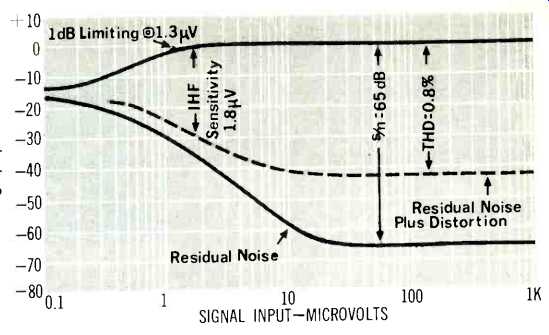
Fig. 3-FM characteristics of Pioneer SX-990 stereo receiver.
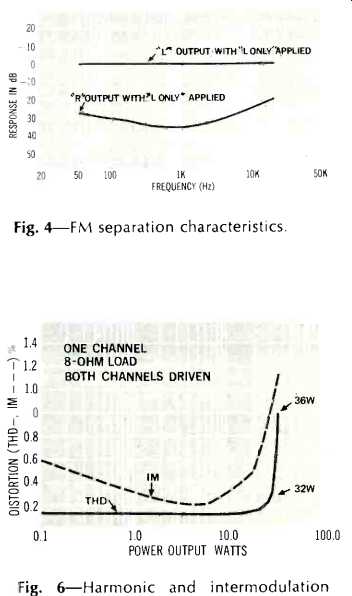
Fig. 4--FM separation characteristics. Fig. 6--Harmonic and intermodulation
distortion.
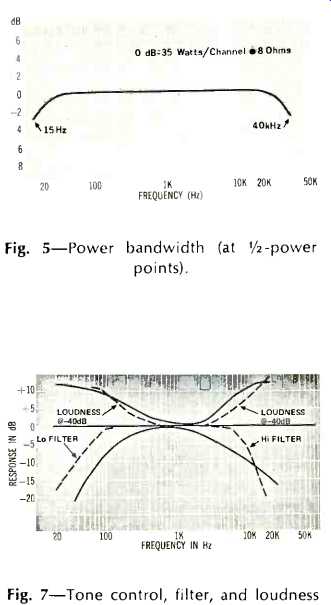
Fig. 5--Power bandwidth (at 1/2-power points). Fig. 7--Tone control, filter,
and loudness control characteristics.
Figure 3 discloses that the unit achieves an IHF sensitivity of 1.8 µV at mid-band and betters 1.7 µV at 88 MHz. One-dB limiting is achieved at mid-band and betters 1.7 µV at measured at 65 dB, while THD for mono measured 0.8% as opposed to the 0.7% claimed. In the stereo mode, THD was just over 1%. Stereo FM separation is plotted in Fig. 4, measuring 35 dB at 1 kHz, 22 dB at 10 kHz.
The amplifier section conformed to published specifications quite nicely.
As with other moderately priced units tested, some of the published and unpublished parameters left something to be desired. Power bandwidth is plotted in Fig. 5, while THD and IM are shown in Fig. 6. The IM distortion is quite low at every power level, though it tends to increase at low power levels (but even here it's only 0.6%). At maximum power levels, however, both THD and IM are seen to conform almost exactly with published claims.
Tone-control, filter, and loudness-control characteristics are shown in Fig. 7.
While the tone-control curves are somewhat asymmetrical, in actual listening use they prove to be quite adequate and effective. The high-frequency filter, with a somewhat steeper (about 10 dB/octave) slope was useful in eliminating surface noise from older records, but the low filter was merely a duplication of the bass control slope and was therefore ineffective. Pioneer chose to revert to both bass and treble compensations in its loudness control. While we feel that some treble emphasis in association with a loudness compensation control may be desirable, this unit emphasizes the treble almost as much as the bass at various settings of the loudness control, rendering an unnatural sound to our ears.
Performance
Using a simple dipole FM antenna, we were able to log 39 usable FM stations. Changing to an outdoor 4 element directional antenna improved this number to 46 stations, of which 16 were in acceptable stereo. We found that the signal-strength meter was not too useful since it reaches full scale at an input signal strength of about 50 µV, while half-scale readings take place at approximately 4µV. The center-of-channel meter, however, was very accurate and corresponded nicely with correct center-of-channel tuning for both weak and strong signals. Muting was extremely effective.
Inter-station noise was completely eliminated with the muting switch depressed, yet signals as low as 2.5 µV were able to overcome the muting circuits without the introduction of noticeable distortion.
AM performance was adequate but not outstanding insofar as bandwidth and frequency response were concerned.
As for amplifier power-handling capability, we found it to be sufficient for a pair of low-efficiency, acoustic suspension-type speaker systems. Amplifier hum and noise were excellent--really inaudible. We tried the microphone input using a high-impedance dynamic mike and found that the gain of this circuit should have been a bit higher. Other input sensitivities were just where we'd like to see them. For example, the magnetic phono sensitivity was 3.3 mV--a good compromise value when no input level adjustment is provided.
The Pioneer SX-990 represents substantial value for its price class, and this is the way it should be evaluated.
It would be unfair to stack it against $400 units, of course. Thus, it constitutes a good all-around receiver buy for someone who wishes to enjoy a fair amount of control flexibility but doesn't require every last control feature ever conceived by the high-fidelity component industry.
(Adapted from : Audio magazine, Jan. 1970)
Also see:
Pioneer Model SX-727 Solid State AM/FM Stereo Receiver (Equip. Profile, May 1972)
Pioneer Model SX-1980 Stereo AM/FM Receiver (Equip. Profile, Sept. 1978)
Pioneer SX-V90 Audio/Video Receiver (Jan. 1985)
= = = =